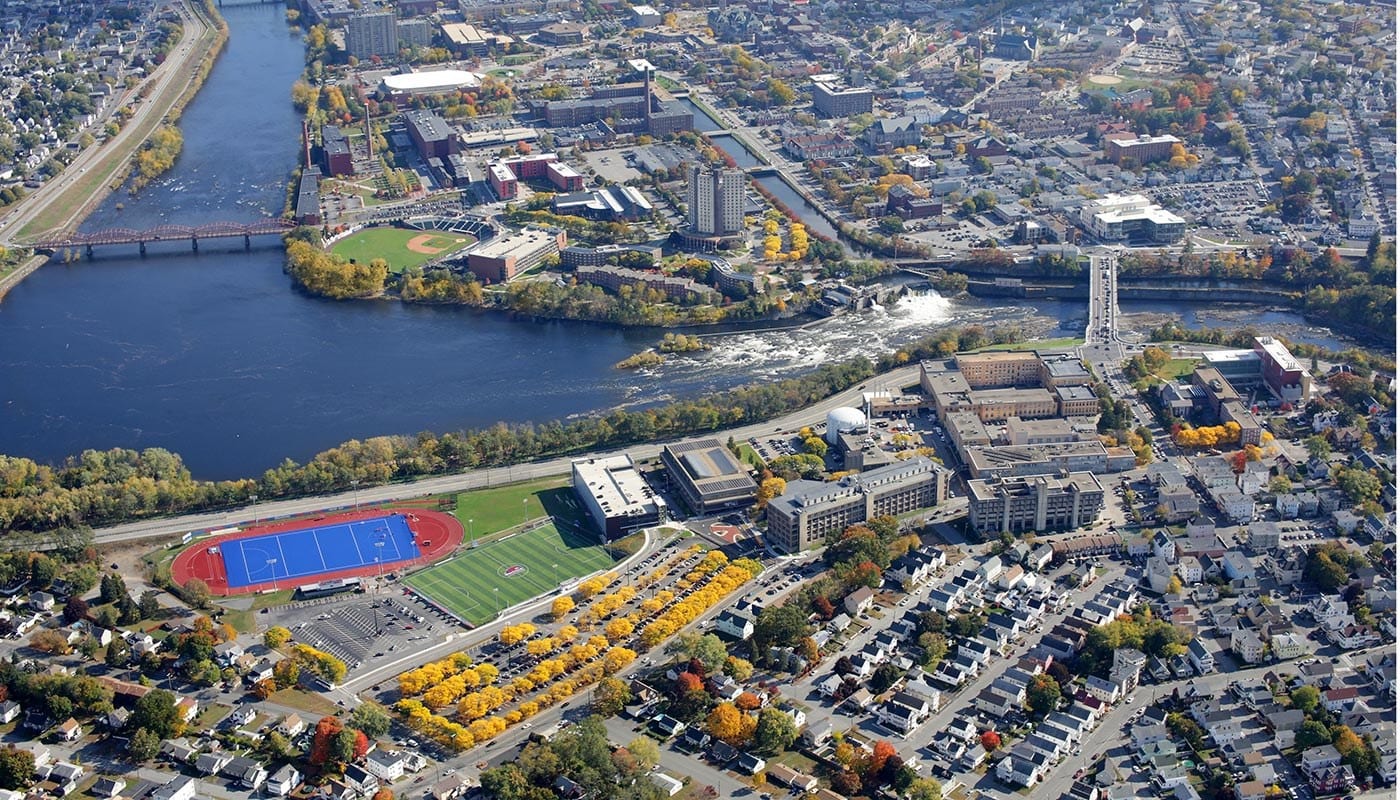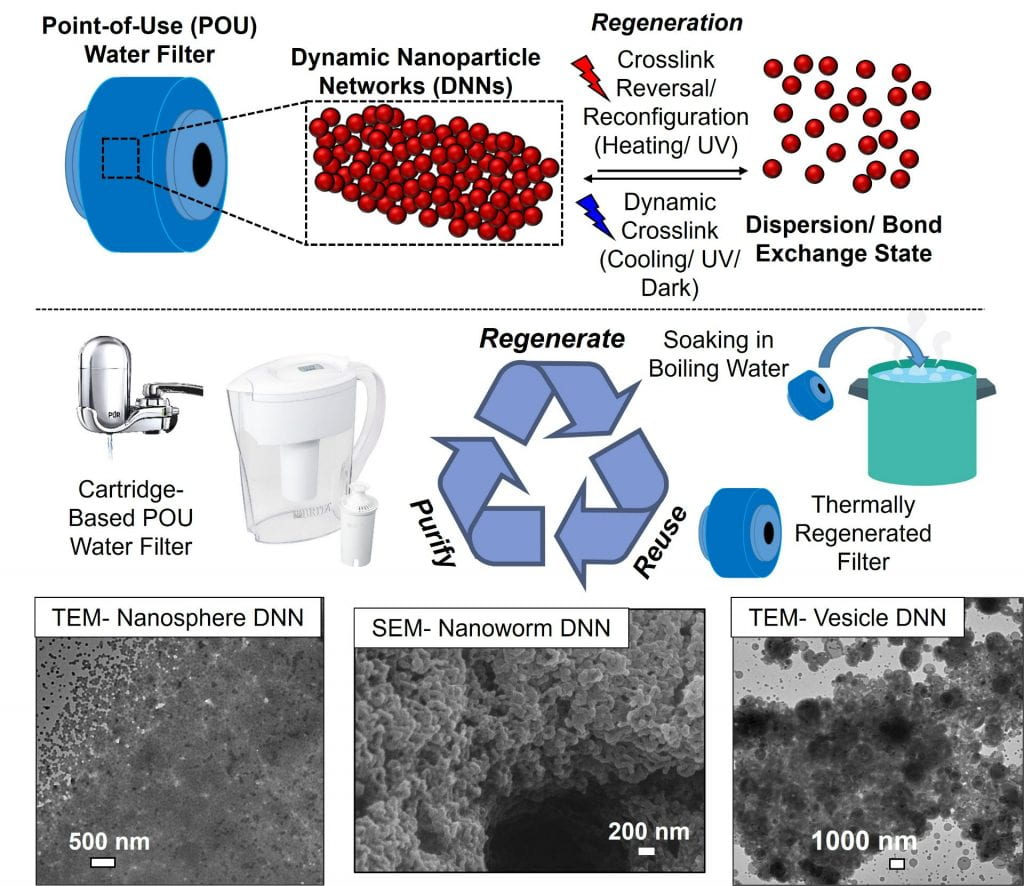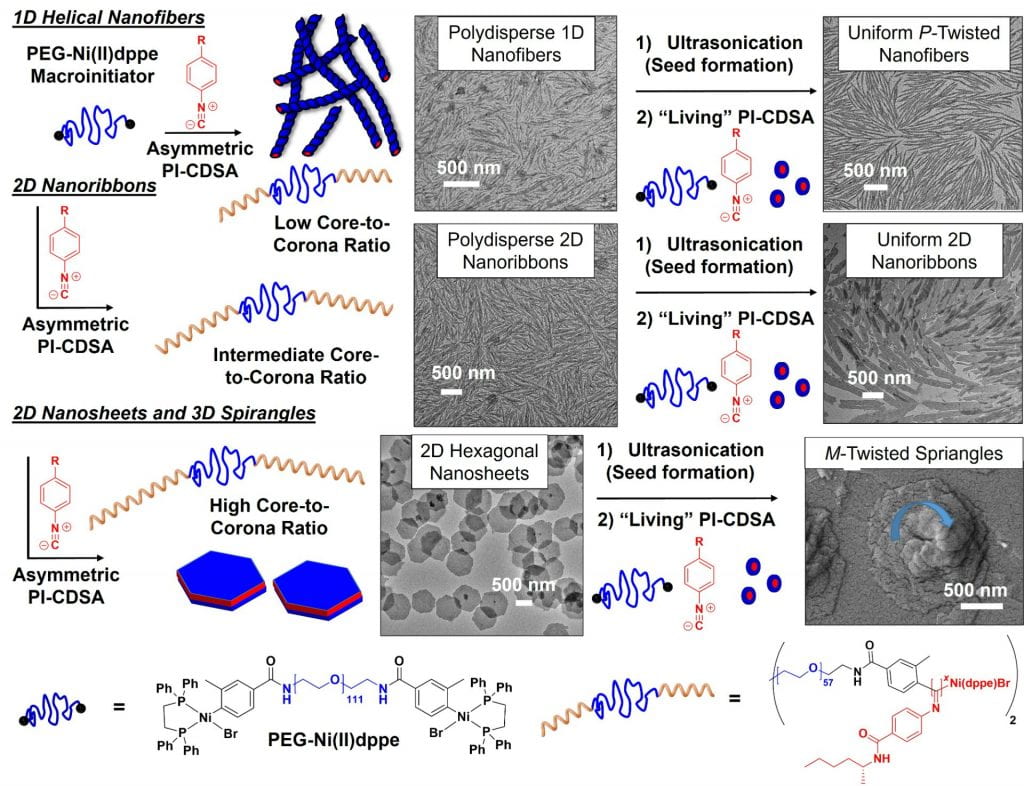
Chemists have become quite sophisticated and intricate in their design of molecules and materials at angstrom and micrometer size scales, respectively. The realm of nanoscale development, however, has only truly taken leaps forward in the past 20 years with the advancements of nanoscopic carbon derivatives and nanocrystalline metal particles. Scientists across many disciplines, including chemistry, biology, engineering, and physics, have demonstrated how materials properties can be drastically manipulated and altered when the material is modulated in sub-nanometer space. In the Reuther group, we will further this development with novel designs to further interface nanomaterials across the sciences for applications as regenerable water treatment devices, reactive adsorbent materials for nerve agent detoxification, renewable nanocomposites, advanced chiroptical materials, and chiral nanoarchitectures for enantiomeric separations.

Sub-Group 1- Dynamically Crosslinked Nanoparticle Networks (DNNs) for Water treatment. The global availability of clean drinking water has reached crisis levels especially in under-developed parts of the world with an estimated 844 million people lacking access to safe drinking water. Novel, sustainable approaches to water purification are now critical to combat this global issue. Traditionally, natural raw water is processed to decrease the concentration of natural and man-made pollutants to legal limits at centralized municipal plants, at private well sources and/or by the users at the point-of-use. Both centralized and point-of-use treatment rely on same physicochemical principles to remove suspended and soluble constituents of the pollutants. One of the main premises of water treatment is concentrating pollutants on highly charged, high surface area solid surfaces (e.g., activated carbon, membrane, ion exchange resin). Since these sorptive materials have a certain removal capacity, they exhaust their treatment ability in time. However, regeneration and reuse can provide a green approach to minimize the cost and environmental impact of water treatment. The overarching objective of this project is to develop dynamically crosslinked, polymer nanoparticle networks for applications as water purification adsorbent materials that can be effectively regenerated using network dissociation and reformation.
The described synthetic approach combines photo-controlled atom transfer radical polymerization induced self-assembly (PhotoATR-PISA) with alkyne functional initiators and copper-catalyzed “click” chemistry with dynamic covalent (DC), bis-azide crosslinkers to form Dynamic Nanoparticle Networks (DNNs). Furthermore, PhotoATR-PISA with disulfide functional initiators results in in situ fabrication of DNNs with multi-responsive disulfide crosslinks between nanoparticles. These DNN adsorbent materials are inherently tunable in nanostructured morphologies (via altering molecular weight in PISA synthesis), chemical composition (through core modification of nanoparticles) and dynamicity (through utilization of different DC bonds) providing a divergent synthetic approach for forming regenerable adsorbent materials. These various factors will be studied systematically to not only investigate the overall regeneration capabilities of the described adsorbent materials but also the potential for chemically-targeted adsorption of high-priority pollutants through targeted intermolecular interactions. Furthermore, we plan to investigate different types of regeneration mechanisms via installation of different DC bonding groups for low temperature thermal regeneration in boiling water (via dynamic Diels-Alder reactions of furans and maleimides and disulfide exchange) and UV-regeneration (via dynamic coumarin dimerization reactions).

Sub- Group 2- Scalable, Shape-Tunable, Chiral Polymer Nanostructures via Asymmetric PI-CDSA. Helical poly(aryl isocyanides) (PAICs) offer a versatile macromolecular scaffold for construction of functional polymeric nanoparticles with defined chirality. Using controlled, living polymerization techniques mediated by transition metal catalysts, monodisperse PAICs can be synthesized with preferential helical twists governed by either chirality of the catalyst or the monomer side chains. Utilizing PEG-based nickel(II) macroinitiators, we can synthesize chiral polymeric nanostructures in a in situ, scalable fashion through novel asymmetric polymerization-induced crystallization-driven self-assembly (A-PI-CDSA) with helical, rigid-rod PAICs occupying the core of nanostructures. Depending on the molecular weight of the in situ grown PAIC blocks and the presence/absence of seed particles, the morphologies of nanostructures can be tuned selectively to include length-controllable helical 1D nanofibers, macromolecularly-thin 2D nanoribbons or hexagonal nanosheets, and height/area tunable, 3D spirangle (i.e., spirally-arranged hexagonal nanosheet stacks) nanostructures. These nanomaterials will be used as organic templates to template the formation of chiral inorganic nanoparticles consisting of silica, metal chalcogenide or noble metals for enantiomeric separations, circularly polarized luminescent, or chiral plasmonic materials, respectively.
